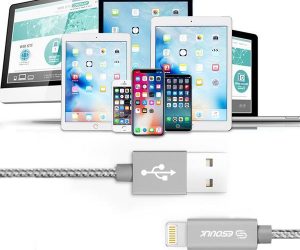In the dynamic world of commerce, mastering cash flow and solidifying your business credit are foundational to navigating the market’s ebbs and flows. Amidst various strategies to achieve these financial milestones, Net 30 invoicing agreements stand out as a beacon for businesses aiming to optimize their financial operations. This masterclass throws the spotlight on Net 30 terms, dissecting their essence, highlighting their pros and cons, and guiding you on leveraging them to bolster your business’s financial health.
Understanding Net 30 is crucial for any business owner or financial manager striving for efficiency in managing cash flow and enhancing creditworthiness. But, what exactly is Net 30, and how can it transform your business’s financial landscape? At its core, Net 30 is a trade credit that gives your customers up to 30 calendar days from the invoice date to settle their bill.
Net 30 agreements are not a one-size-fits-all solution. They come with variations such as Net 30 EOM (End of Month) and Net 30 from Receipt of the Invoice, each with unique advantages and implications for your business. The flexibility to negotiate these terms, tailored to suit both your and your client’s needs, represents a significant negotiation power.
This masterclass aims not only to unfold the mechanism of Net 30 but also to equip you with advanced strategies and best practices. Whether it’s synchronizing sales and vendor payment cycles, extending your credit line through diversified vendor relationships, or utilizing financial tools like factoring for immediate liquidity. Understanding and implementing Net 30 agreements can indeed be a game-changer for your business.
As we sail through this guide, let’s delve deeper into harnessing Net 30 invoicing agreements for optimizing cash flow and enhancing your business credit, propelling your business toward sustained growth and financial stability.
Understanding Net 30: More Than Just a Number
The Basics of Net 30 Terms
Net 30 refers to a credit term where the customer has 30 calendar days from the invoice date to pay the complete amount owed. This concept, although straightforward, is a foundational component of managing business finances, particularly cash flow and credit. By allowing customers this 30-day period, businesses provide a flexible payment option which, when managed effectively, can strengthen client relationships without negatively impacting their own cash flow. Understanding and implementing Net 30 terms efficiently can thus play a significant role in the financial health and growth of a business.
Variations and Their Implications
The classic Net 30 term comes with several variations, such as Net 30 EOM (End of Month) and Net 30 from Receipt of Invoice. These different terms offer flexibility to your customers but also affect your cash flow differently by altering when the 30-day payment period starts. For instance, Net 30 EOM can extend the payment period beyond 30 days depending on when the invoice was issued. Understanding these variations allows businesses to strategically leverage them to align with their cash flow needs and customer relationship management.
The Function and Importance of Contracts
Formalizing Net 30 terms within contracts is crucial, especially for establishing long-term business relationships. Contracts serve not only to legally enforce these terms but also to outline clear escalation steps and dispute resolution mechanisms should payments become overdue. This level of detail and formality underscores the seriousness with which you view these terms and helps prevent potential misunderstandings or disputes. In essence, a well-crafted contract provides a safety net for both parties, ensuring clarity and a mutual understanding of expectations.
Structuring Your Invoicing Agreement: Keys to Clarity
Making Terms Clear and Prominent
When setting Net 30 terms, the clarity and visibility of these terms on your invoices cannot be overstated. Instead of burying “Net 30” in fine print, these terms should be bold and clearly displayed to avoid any miscommunication. This straightforward approach ensures that both parties are on the same page from the start, minimizing the risk of late payments due to misunderstandings, and establishing a professional tone for the transaction.
Including Essential Details and Dates
A thorough invoicing agreement is more than just payment terms; it requires comprehensive details such as specific dates, including the invoice date and the due date, to eliminate ambiguity. Additionally, the inclusion of an itemized list of goods or services provided, the total amount due, and acceptable payment methods makes the payment process as easy as possible for your client. These elements not only make your invoice more professional but also help streamline the payment process, reducing the likelihood of payment delays.
Outlining Consequences and Incentives
An effective invoicing agreement should transparently outline the consequences of late payments, such as fees or interest charges, as well as any incentives for early payments, like discounts. These provisions serve a dual purpose: they encourage timely payments, safeguarding your cash flow, and they clearly communicate the repercussions of disregarding the agreed-upon payment terms. The inclusion of incentives also demonstrates goodwill, providing a financial benefit to clients who fulfill their obligations promptly, and fostering positive business relationships.
Net 30 Success: Implementing Best Practices

Net 30 invoicing agreements, done correctly, serve as pivotal tools for maintaining liquidity and strengthening credit ratings for businesses. This segment explores the best practices to ensure Net 30 success, focusing on evaluating creditworthiness, timely payments, and strategy adjustments.
Evaluating Client and Vendor Creditworthiness
Before diving into Net 30 agreements with clients or vendors, a thorough evaluation of their creditworthiness is essential. For clients, conducting credit checks and requesting references can unveil their payment history and financial stability. This upfront due diligence helps mitigate risks associated with delayed payments or defaults. When selecting Net 30 vendors, consider those with robust reporting practices to credit bureaus. This step is not only about ensuring that your timely payments are recorded, thereby boosting your business credit score, but also about partnering with vendors known for their reliability and financial health.
Prioritizing Timely Payments and Communication
Adhering to the agreed-upon Net 30 terms by making prompt payments is crucial for preserving business relationships and credit scores. View these invoices as top financial obligations, and always strive to pay on time, even if it means occasionally struggling with other bills. Clear, consistent communication also plays a significant role in the success of Net 30 agreements. Any potential payment delays should be communicated proactively with an explanation and a proposed action plan. This level of transparency can help maintain trust and possibly lead to adjusted terms that prevent relationship strain.
Continuous Monitoring and Adjusting Strategies
The financial landscape and business needs are always evolving, necessitating regular reviews and adjustments of your Net 30 strategies. Monitor the performance of Net 30 agreements in terms of cash flow impact and credit score enhancements. Additionally, keeping an eye on the market for new or better Net 30 vendor relationships can lead to improved terms and benefits. This ongoing process ensures that your business is always leveraging Net 30 agreements to their maximum potential.
Finding and Vetting the Best Net 30 Vendors

A crucial aspect of maximizing the benefits of Net 30 terms lies in choosing the right vendors. The following sections detail how to identify potential Net 30 partners and the key considerations when vetting them to ensure maximum benefit to your business.
Identifying Potential Net 30 Vendors
Finding the best Net 30 vendors begins with research within your industry for suppliers that offer favorable Net 30 terms. Trade publications and industry associations can be invaluable resources for discovering these vendors. Recommendations from business contacts who have positive experiences with specific Net 30 vendors can also guide your search. Furthermore, exploring online marketplaces designed to connect businesses with Net 30 suppliers across various industries can uncover potential partners that might not be immediately evident.
Vetting Vendors for Maximum Benefit
Successfully vetting Net 30 vendors involves a series of critical inquiries and assessments to ensure they align with your business objectives and financial strategy.
– Credit Reporting: Verify that the vendor consistently reports payment histories to credit bureaus, enhancing your ability to build a strong business credit score.
– Specific Terms: Understanding the exact nature of the Net 30 terms, including due dates and the possibility of staggered payments, is crucial to managing cash flow effectively.
– Fees and Minimums: Inquire about any setup fees, minimum order requirements, or late payment penalties that could affect the cost-benefit analysis of engaging with a vendor.
– Reputation: Conduct research through reviews, the Better Business Bureau, and your network to gauge the vendor’s reliability and customer service quality.
– Customer Service: Assess the vendor’s responsiveness and professionalism during the initial engagement. This often indicates the level of service and support you can expect moving forward.
Choosing the right Net 30 vendors is an iterative and strategic process that involves diversifying your vendor network and periodically reassessing vendor relationships to ensure they continue to meet your evolving business needs. By fostering open communication and being proactive in managing these relationships, your business can leverage the financial leverage and flexibility that Net 30 agreements offer.
Lessons from The CEO Creative: Mastering Net 30
The CEO Creative’s Guide to Net 30 Excellence
Net 30 invoicing agreements, when properly leveraged, can substantially elevate a company’s cash flow and credit standing. The CEO Creative exemplifies mastery in this domain by not merely using these agreements as transactional terms but integrating them into a broader financial strategy. Central to their success is a meticulous approach to selecting Net 30 vendors, ensuring they partner with entities that not only extend favorable payment terms but also accurately report transactions to credit bureaus. This dual focus facilitates optimal cash flow while organically enhancing the company’s credit profile. The CEO Creative underlines the importance of clear communication and systematic invoicing, ensuring that every Net 30 agreement is supported by transparent terms and efficient tracking.
A Blueprint for Cash Flow Optimization
Cash flow optimization is arguably the most immediate benefit of implementing Net 30 invoicing agreements effectively. The CEO Creative demonstrates that by aligning payments received under Net 30 terms with their outgoing expenses to Net 30 vendors, a business can create a financial ecosystem that maximizes the use of every dollar. This synchronization takes precise planning and a deep understanding of one’s sales cycles and purchasing needs but ensures that cash is always available for essential operations and strategic investments. Importantly, employing accounting software for streamlined invoicing and due date tracking is non-negotiable for businesses aiming to replicate The CEO Creative’s success.
Building Business Credit the Smart Way
For many businesses, a robust credit score remains elusive, often due to a lack of reporting by vendors or infrequent credit activity. The CEO Creative sidesteps these challenges by strategically engaging with Net 30 vendors known for their diligent reporting practices. This approach not only enriches the company’s credit report with positive payment history but also opens the door to more favorable financing terms and greater operational flexibility in the future. Another key to their strategy is the disciplined adherence to payment schedules, prioritizing Net 30 obligations to safeguard their credit reputation and maintain healthy vendor relationships.
Advanced Net 30 Strategies
Aligning Purchasing and Sales Cycles
Advanced application of Net 30 invoicing agreements often involves strategic alignment of a company’s purchasing and sales cycles. This tactic, as practiced by industry leaders like The CEO Creative, ensures that cash inflows from sales can directly cover the outflows to vendors. Achieving this harmony requires meticulous planning and a deep understanding of one’s operational and financial rhythms. It’s a dynamic process, adapting to sales trends and supply chain fluctuations, but when performed correctly, it can significantly boost a business’s financial agility and stability.
Negotiating for Better Terms and Benefits
Leveraging a strong payment history with Net 30 vendors can yield much more than just good credit; it can become a significant negotiating tool. Businesses that consistently meet their Net 30 obligations can use this reliability as leverage to negotiate more favorable terms, such as extended payment periods or bulk purchase discounts. These improved terms can significantly decrease operational costs and enhance profit margins. The CEO Creative’s experience underscores the importance of viewing vendor relationships as partnerships where mutual benefits can and should be pursued.
Utilizing Factoring for Cash Flow Management
Factoring is an innovative strategy for businesses leveraging Net 30 invoicing agreements but requiring immediate cash flow. This financial maneuver involves selling outstanding invoices to a factoring company at a discount in exchange for immediate capital. Though it comes at a cost, the immediate liquidity provided can be crucial for maintaining operations or capitalizing on timely opportunities. Companies like The CEO Creative might turn to factoring as a tool to bridge the gap between invoicing and actual payment, ensuring that cash flow remains uninterrupted despite the Net 30 terms. However, it’s essential to weigh the benefits against the costs, considering the immediate cash flow needs against the potential reduction in overall revenue due to factoring fees.
Conclusion
Net 30 invoicing agreements and strategic partnerships with Net 30 vendors are not just methodological approaches to managing business transactions; they are foundational elements for achieving remarkable financial autonomy and efficiency. When properly implemented, they serve as a blueprint for sustainable growth, enabling businesses to:
– Optimize Cash Flow:
– Gain the necessary leeway to reinvest in growth initiatives.
– Capitalize on unforeseen opportunities without jeopardizing day-to-day operations.
– Navigate financial tight spots without losing momentum.
– Build a Robust Business Credit Profile:
– Every punctual payment fortifies your creditworthiness.
– A commendable credit score attracts favorable financing options.
– Establishes your venture as an attractive partner in competitive markets.
– Cultivate Stronger Vendor and Client Relationships:
– Demonstrates your reliability and commitment to ethical business practices.
– Facilitates smoother negotiations and transactions.
– Potentially positions your business as a preferred customer during supply constraints.
The journey of companies such as The CEO Creative, which have adeptly navigated the intricacies of Net 30 agreements, underscore the significant benefits that can be accrued. Their story is not just a success narrative but a potent reminder that financial liberation isn’t serendipitous. It’s the culmination of strategic planning, rigorous discipline, and effective utilization of financial tools at your disposal.
In summation, Net 30 financing isn’t merely a convenience—it’s a strategic advantage. By embedding these practices into your business’s DNA, you pave the way for enhanced financial stability, growth, and reputational excellence. Net 30 is more than a payment term; it’s your pathway to financial freedom and operational supremacy.













